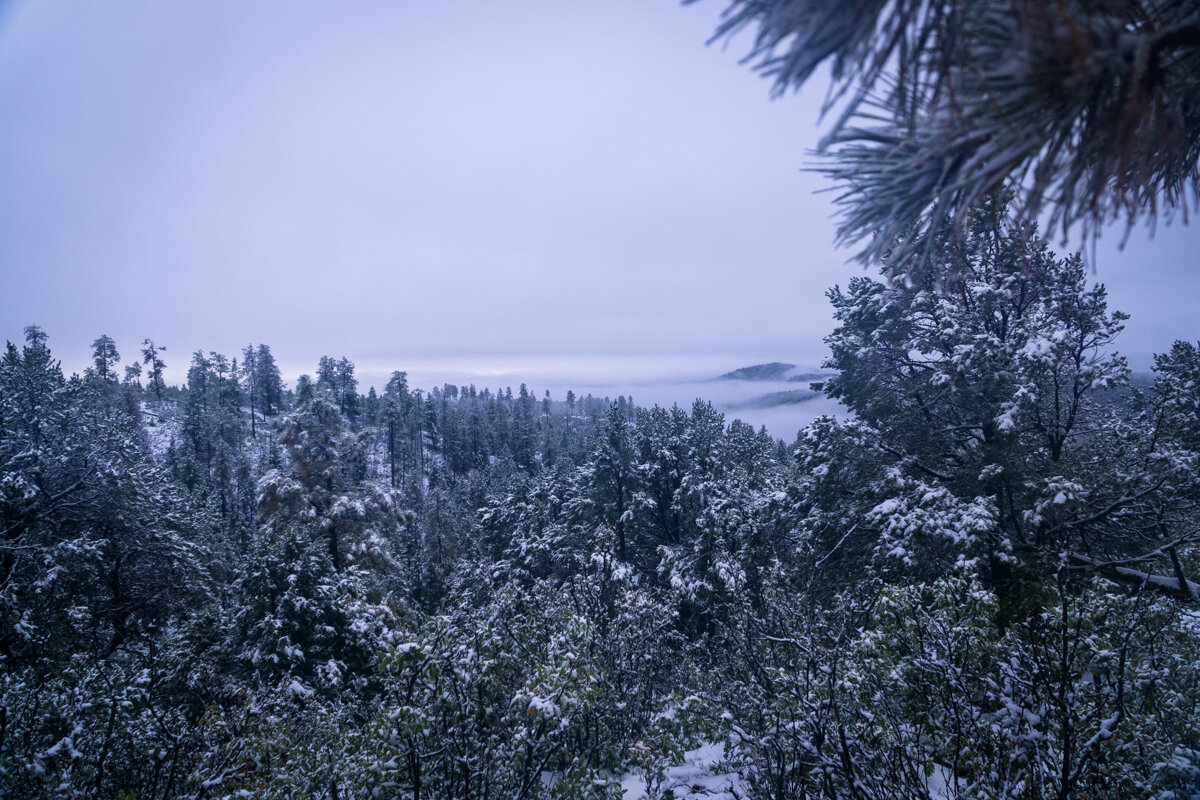3 Cold Weather Hacks to Make Your Rifle Hunts More Enjoyable
Rifle seasons here in Colorado usually bring cold weather. Even in a mild year, pre-dawn temperatures can be bitterly cold when you leave camp each morning. And as the rifle seasons progress from October into November, the chance for cold weather only increases.
The more comfortable you can be in cold temperatures, the more you’ll have an enjoyable hunting experience. Even more importantly – when you’re comfortable, you’ll be more focused on hunting and ready for opportunities when they arise. You’ll be able to get out earlier and stay out later, increasing your odds of an encounter.
Besides just willpower, how you do battle cold temperatures and convince yourself to get up out of your sleeping bag each morning, rather than staying cozy for just a few more minutes? After all, those first few minutes of daylight could be the difference maker…
We will assume that you already have quality clothing and a good layering system. If you need a few tips in that department, go see this previous post. Beyond the gear, here are a few ideas to make your rifle season hunts more enjoyable:
1. Eat a Late Breakfast
If you’re lucky enough to be on a guided hunt with us at Dark Timber Lodge, you’ll wake up to a hot breakfast each morning. If you don’t have that luxury, consider this: rather than huddling over a camp stove waiting for water to boil, get up and get moving right away. Put on your backpack (it helps if you prep your pack the night before) and start hiking. If needed, eat an energy bar along the trail for some quick calories.
Getting your body moving quickly is a great way to knock off that chill in the morning. Since the pre-dawn timeframe is the coldest, don’t spend that time trying to cook breakfast in camp. Instead, spend it hiking. Get warm as you make your way to your first glassing spot of the day, or wherever you plan to begin your morning hunt.
When you get to that glassing spot or starting point, you’ll be warmed up and feeling much better already. Enjoy the morning hunt – hopefully you’ll be glassing up some animals right at first light! Then, when you hit that first mid-morning lull when the sun has warmed things up, break out your snack bag and have your breakfast.
For my mid-morning breakfast, I like to eat a Mountain House or Peak Refuel granola with milk and berries. Alternatively, you can easily make your own just-add-water breakfast with granola, dried milk and dehydrated fruit. No matter your preference, I find it much more enjoyable to eat breakfast in the warming sunshine on a mountainside than in a cold, dark tent first thing in the morning.
2. Add a Lightweight Stove System to Your Daypack
You can really kick your comfort level up a notch by adding hot beverages and meals to your day hunt. Instead of just cold granola for that mid-morning breakfast, try a hot breakfast with a hot cup of instant coffee. It will add some weight to your daypack, which isn’t ideal. But when the weather is cold, this extra bit of warmth can make a big difference in your day. Later in the afternoon when you’re feeling worn out, break out the stove again and make yourself another cup of coffee or tea.
When the weather isn’t extremely windy or cold, I carry an MSR Pocket Rocket with a little titanium pot. The stove, the pot, one fuel canister and a lighter all together weigh exactly a pound. That’s not bad for some serious on-the-mountain comfort.
When the weather is particularly cold or windy, the Pocket Rocket becomes a little less fuel efficient. For that reason, I turn to an MSR Windburner in extreme conditions. It’s a little heavier but even in nasty weather, it will boil water in a snap. My Windburner system (which has a built-in 1-liter pot), and a fuel canister weighs 1 pound, 6 ounces.
Along with your stove system, add a few packets of instant coffee, tea, hot chocolate, ramen or whatever keeps you going. Whether it’s breakfast or lunchtime, enjoy something hot during the day. It’s amazing what it’ll do to lift your spirits.
3. Bring Glassing-Specific Layers
Late season hunting for elk or mule deer requires plenty of glassing When you let your eyes do the walking, you can cover more ground and you’ll see more animals. Rather than walking around hoping you see something, plant yourself, put your binoculars on a tripod and really use those optics to your advantage.
The only downside to all this stationary time behind the glass is that it makes cold weather feel colder. For that reason, it’s worth the extra weight to bring some glassing-specific clothing items.
When I leave camp in the morning I dress light, knowing that I’ll warm up as soon as I start walking. It’s better to be cold when you begin than to work up a sweat and get damp. As soon as you sit to glass, that dampness will quickly turn into a chill. So instead, go light on the walk in and bring a few extra layers in your daypack.
For glassing, I like to bring a puffy down jacket. If the weather is mild, the First Lite Brooks Down Sweater is a perfect option. It weighs a mere 10 ounces and will totally disappear in your pack. If the weather is very cold, I pack the First Lite Chamberlain Down Jacket. This one is bulkier. Even so, at just 25 ounces it’s like putting on a sleeping bag when you sit down to glass. Combine that with your hot cup of coffee, and you can happily wait on the elk.
When the weather is particularly cold, I also like to add a pair of puffy pants. The First Lite Uncompahgre Puffy Pants are a super cozy addition to your daypack. When I arrive at my glassing point at dawn, I pull out my puffy jacket and these puffy pants. This makes sitting and glassing during the coldest part of the day much more comfortable.
Finally, don’t forget your extremities. I’ll often skip wearing a beanie on the morning hike, again to avoid the sweat factor. But as soon as I get to my first glassing point, I put on a beanie and warmer gloves. The First Lite Brooks Down Glassing Mitts are ideal. At 3.5 ounces you’ll never notice them in your pack. But they’re great to have for those cold glassing sessions. Lastly, add a warm neck gaiter to your system. Having your head, neck and hands covered will make a world of difference.
To learn more about the guided Colorado elk hunts and mule deer hunts with Dark Timber Lodge, please take a few minutes to browse the rest of the website. For information on our late season hunting go have a look at the Timber To Table Outfitters website. If you have more specific questions, please don’t hesitate to send us a message or call Adam at 208-691-3014.


